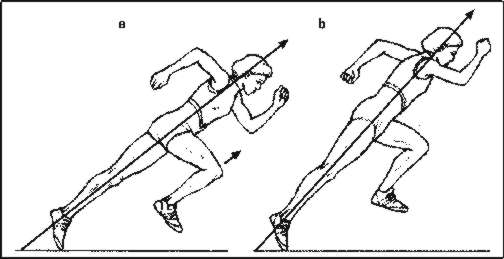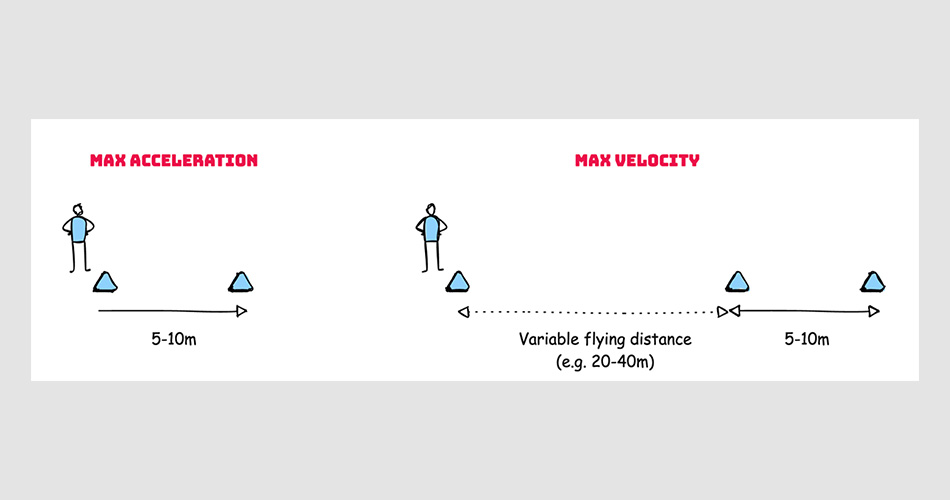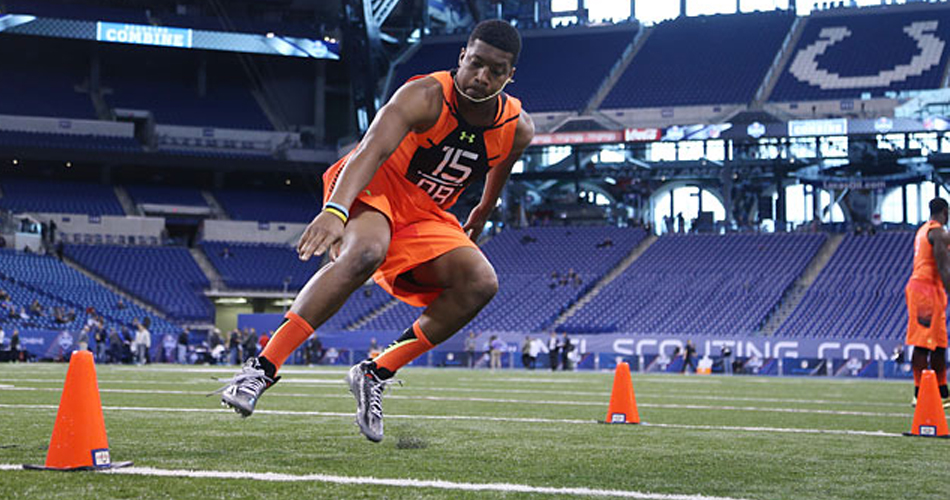Is Taking a False Step a Bad Idea?
Coaches call it ‘false step‘ and preach that the first step when starting/accelerating should always be step forward. Lee Taft calls it “Plyo Step”:
Is the mentioned point stance complete B.S., and should we correct this and punish the players for doing it?
Although I have already covered some information on the plyo step in my final paper Training and Testing Agility in Sports I will share three supporting research papers that are supportive of plyo step.
At push-off, the mass centre of gravity of the body must be positioned in front of the foot to prevent a somersault. When starting a sprint from out the standing position the use of a step backwards is necessary for maximal acceleration. The aim of the present study was to quantify the positive contribution to push off from a backward step of the leg, which seems to be counterproductive. Ten subjects were instructed to sprint start in three different ways: (a) starting from the standing position just in front of the force platform on the subject’s own initiative, (b) starting from the standing position on the force platform with no step backward allowed, and (c) starting out of the starting position with one leg in front of the force platform and the push-off leg on the force platform.A step backwards was observed in 95% of the starts from the standing position. The push-off force was highest in starting type (a), which had the shortest time to build up the push-off force. The results indicate a positive contribution to the force and power from a step backwards. We advocate developing a training program with special attention to the phenomenon step backwards.
Recent research has indicated the paradoxical step back when accelerating creates a greater impulse, provides more horizontal power, and results in superior displacement compared to the drop-and-go technique. Therefore, stepping back should be considered an essential element when training acceleration.
Starting stance plays an important role in influencing short-distance sprint speed and, therefore, the ability to reach a ball during sport play. The purpose of this study was to evaluate 4 different starting stances on sprint time. Twenty-six male and female collegiate volleyball players volunteered to participate in 1 testing session. Each subject performed 3 15-ft sprint trials at each of 4 different starting stances (P-parallel, FS-false step, S-staggered, and SFS-staggered false step) in random order. Analysis of variance revealed that there was no significant interaction of sex by stance, but there were main effects for sex (men were faster than women) and stance. The FS (1.18 ± 0.10 seconds), S (1.16 ± 0.07 seconds), and SFS (1.14 ± 0.06 seconds) stances were faster than the P (1.25 ± 0.09 seconds) stance, and the SFS stance was faster than the FS stance. This indicates that starting with a staggered stance (regardless of stepping back) produced the greatest sprinting velocity over the initial 15 feet. Although taking a staggered stance seems counterproductive, the resultant stretch-shortening cycle action and forward body lean likely increase force production of the push-off phase and place the total body center of mass ahead of the contacting foot, thereby, decreasing sprint time
Anyway, should we always use plyo step when accelerating? Why aren’t Olympic sprinters using it if it is faster? The answer is again – IT DEPENDS.
Sprinters are using staggered stance in blocks because this allows them the optimal biomechanical position to express maximum propulsive force. Although the last quoted research stated that the false step staggered stance achieved better sprint times than staggered stance, we are here talking about collegiate volleyball players. It takes practice to master sprint start (although they didn’t use blocks) and it doesn’t mean that something that is better “right off the bat” is better in long term. It takes time and practice.
But can this same thing be said for plyo step? Would athletes get better times if they try to avoid false step when accelerating from standing position? I guess we need longitudinal study (where athletes actually train to start from a certain stance) instead of cross studies cited, but anyway I don’t think so. When starting from standing parallel position (athletic stance), plyo step will always produce better sprint times then trying to forcefully (voluntarily) take first step forward. This is because false step puts the body into the position where the force vector (Ground Reaction Force – GRF) has higher propulsive component due the origin of the GRF which is behind the body center of mass (COM) compared to parallel stance where GRF origin is underneath COM (where the athlete must to pull himself instead of push himself which is more powerful).

Taken from Speed-Strength Training Basics by Derek Hansen
But, should athletes always do a plyo step when starting from standing parallel position? Me and my fellow coach Ognjen Milić had a huge argument with one tennis coach when we worked at TK Banjica in Belgrade. This coach was telling us that the false step is “bad” when the athlete reaches to intercept the ball (he showed us a couple of variations of lunges to prepare for backhand/forehand) and we were trying to explain him that plyo step is “normal” when the athlete suddenly needs to sprint toward the net. We were going back and forth showing the examples from tennis matches and accusing each other for being ignorant.
Do you see the difference here? We were talking about two different things, where the task goal is different. The first one is to get to an optimal position for backhand/forehand (basically intercepting action where time to contact can vary) and the second one is to get from point A to point B as fast as possible. When you have enough time (time to contact in this case) you are not in a “rush” to reposition your body to a good posture to deliver technical skill, but when you are pressed for time and you need to react to a specific stimulus your body will do the most normal/natural thing.
This same discussion can be expanded toward cross-over start in dribbling the basketball (crossover dribble), where the first step is forward and ‘cross’ (step across) to put the leg between and body between the defender and the ball. So, we are talking about different task goals. Again context dependent.
To conclude: should we correct the players when they do the false step when accelerating from standing staggered/parallel stance with the aim to cover certain distance in the least amount of time (read carefully since I put an effort to define the task goal – context)? No. Should all acceleration from standing position including technical skill involve the false step? Again the answer is no. In some situations false step is justified as long as there is time pressure (as fast as possible) and no breaking of basic technical and tactical (conceptual) principles of a certain sport/motor pattern.
When we neglect the context we can make false dogmatic claims. Watch for it.











Responses